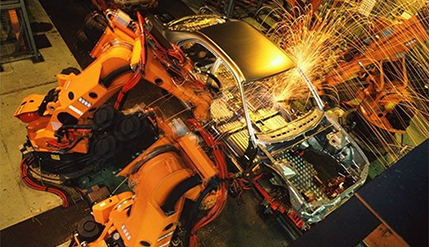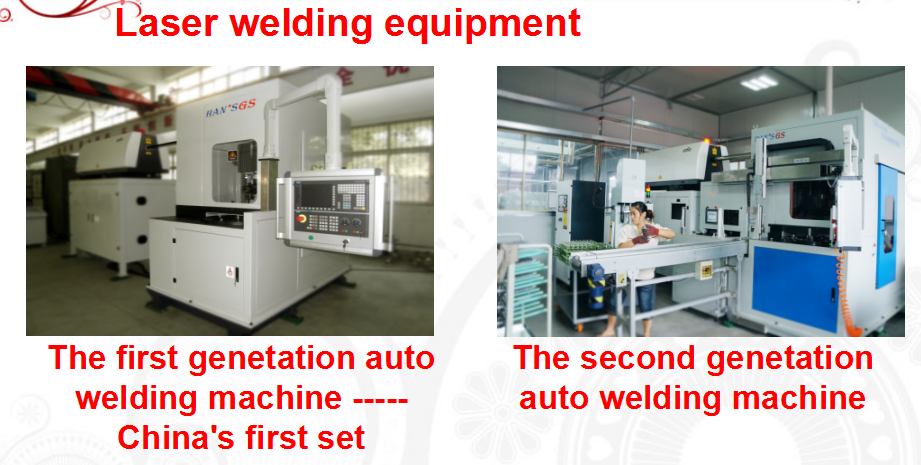The use of high-strength steel plates to reduce the thickness of steel plates is an effective way to reduce the weight of vehicles. However, thinning the thickness of steel plates may cause insufficient rigidity. In addition to the rigidity of the components affected by the properties of the steel plates, the welding conditions of the components are also very rigid. influences. For component rigidity, continuous welding methods such as laser welding and laser-arc hybrid welding are better than resistance spot welding. Laser welding is a welding method that has a high welding speed and a low heat input, and when the flange of the part is welded, a flange that is narrower than the resistance spot welding width can be obtained. Laser-arc hybrid welding can add weld metal to the weld because of composite arc welding. Therefore, welding can be performed under conditions larger than the laser welding gap, which relaxes the requirements for the accuracy of the welded joint.


HANS GS Corporation has studied the problem of continuous welding of the flange of the frame in order to balance the weight and rigidity of the frame parts. In order to find out the role of laser welding and laser-arc hybrid welding in improving the rigidity of the components, HANS GS and the steel company jointly performed a hat-shaped test specimen rigidity test.
In order to verify that the laser welding and the laser-arc hybrid welding of the frame member flanges can improve the rigidity of the parts, a torsion stiffness test of the shape of the cap-shaped samples was performed. The flange overlaps on both sides of the hat-shaped specimen are respectively resistance spot welding, laser welding and laser-arc hybrid welding. The welding position is the center of the sample flange, the end of the sample corner, and the inside corner. Resistance spot welding only welds the center of the flange, the laser welds the flange center and the end of the corner, and the laser-arc hybrid welds the tip and inside corners of the weld. Laser welding and laser-arc hybrid welding conditions. The front end of laser-arc hybrid welding is a laser beam. Observing the macroscopic structure of the laser welding and the laser-arc hybrid welding zone of the flange, it can be seen that the end melting width of the laser-arc hybrid welding is larger than the end melting width of the laser welding corner, and the laser-arc hybrid welding inside There is no weld defect because there is a gap between the corner laps and the filler metal.
Torsional rigidity tests were performed on the hat-shaped specimens. The stiffness value is calculated from the slope of the torsional load angle-torque curve. The stiffness value of the resistance spot welding sample (pad pitch: 35 mm, welding position: center of the flange) was defined as 1 and the ratio of the rigidity of each sample to the rigidity of the resistance spot welded sample was set. It can be seen that, compared with resistance spot welding, continuous laser welding increases the rigidity of the specimen by about 8% (comparison of RSW (CTR) and LBW (CTR)), and the laser welding position is at the end of the specimen corner. Increases rigidity by 13% (LBW(REN)). The rigidity of the corner and inner corners of the laser-arc hybrid welding is 16% to 18% higher than that of resistance spot welding.
From the result of CAE analysis of the flange principal stress distribution of the LBW (CTR) and the laser welding angle at the center of the laser welding (flange centered specimen) (LBW (REN)), it can be seen that compared with the center of the flange The deformation of the flange center of the corner end welding sample to the end of the sample corner is suppressed, deformation of the side wall of the sample is reduced, and the torsional rigidity of the sample is improved.
The above test results show that continuous welding of the frame member flanges and selection of an appropriate welding position can improve the rigidity of the frame members, thereby obtaining the effect of light weight and high rigidity of the frame members.


 中文
中文 English
English France
France العربية
العربية русский
русский español
español português
português srpski језик
srpski језик Việt Nam
Việt Nam
 中文
中文 English
English France
France العربية
العربية русский
русский español
español português
português srpski језик
srpski језик Việt Nam
Việt Nam






